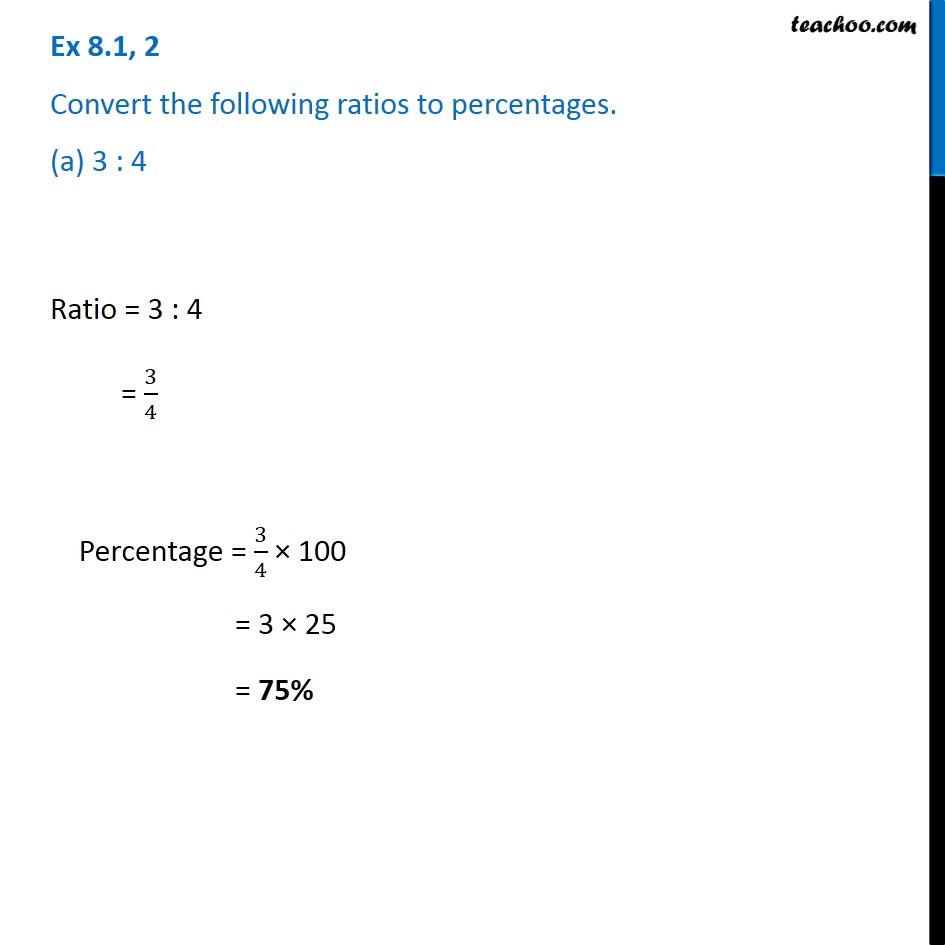
Solution: Percentage = 45%, ‘Whole’ = 100Įxample c) A soccer player scores a goal 53% of the time he takes a penalty kick.

Substituting the same in the above formula, we get Let us better understand the usage of the above formula with some examples and solve them step-by-step So for instance, if you have to multiply by 21%, you will multiply by 0.21 and not by 21 because 21% = 21⁄100 = 0.21 But remember, percentage always means ‘by hundred’. The formula to find a part of the whole based on a certain percentage is:Īs can be seem above, you simply have to multiply the percentage by the whole to get the part. In simple words, you have to calculate what part of the whole corresponds to the respective percentage. Percent of whole problems are one where the ‘whole’ is provided and you have to calculate a ‘part’ of it depending on the percentage which is also provided. Let us look at each one below Percent of whole There are a few different ways that percentage problems are presented and based on that, the formula for calculating percentage varies. ‘ Percentage‘ – Percentage is more commonly used to express the degree of a part out of the whole and is not preceeded by a number but rather is preceeded by non-specific terms.įor example, “In a county in USA, a large percentage of voters did not show up to vote” or “A certain percentage of home-owners” or “A small percentage of runners participating in.” Percentage formula (Think, like metres or kilograms) and it preceeded by an number or amount.įor example: “In a county in USA, only 30 percent of voters showed up to vote for the candidates at the booth” or “twenty five percent of houseowners in…” or “12 percent of runners participating in…” ‘ Percent’ – Percent is a unit of measurement used to express a specific number that is being expressed. The word ‘Percent’ and ‘Percentage’ are closely related often used interchangeably especially in mathematics assuming it does not make much of a difference and true, that they won’t affect your calculation but semantically, the two terms are not the same and incorrect usage often the terms makes them sound wrong. All of which we will study in detail later. This ability of a portion of the whole expressed as a percentage let’s us easily calculate and understand a lot of things very easily like percentage increase, decrease or change etc. This ability to express non-hundreths in terms of hundreths is an extremely useful and essential one crucial to almost all fields of business, mathematics and life today. (Don’t worry about the calculations behind how we got the percentages for now, that will be covered in detail below soon)

And despite the bigger numbers, the passing percentage of Test B is 48% and actually lower than that of Test A. When the above passing numbers are expressed as percentages, we get that the passing percentage of Test A is 50%. This is where percentages are really useful. At the same time it is also very difficult to compare the Tests when there is a large difference between the scores like the above example where in one test 25 students out of a batch of 50 pass it compared to the second test where 6876 students out of a batch of 14,323 pass the test. You cannot always express things in fractions of a quarter, a half or three-fourths.

In Test A, you might easily say ‘Half the students passed the Test’ but in Test B, it is very difficult to express the same. Without the use of percentages, it would be difficult to express what fraction of the students passed the tests as well as to compare which test has a higher or lower passing rate. In Test B, 6,876 students out of 14,323 pass the test. In Test A, 25 students out of 50 pass the test. Example: Assume we have to calculate and compare the passing rates of two different tests.


 0 kommentar(er)
0 kommentar(er)
